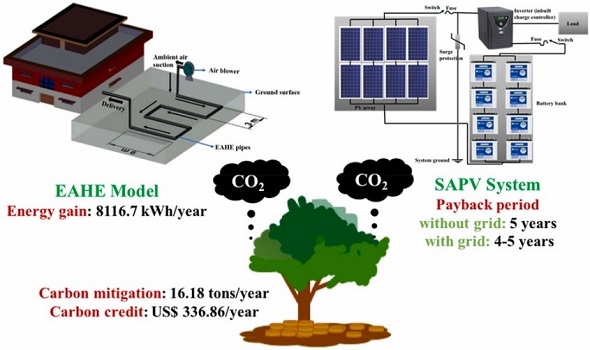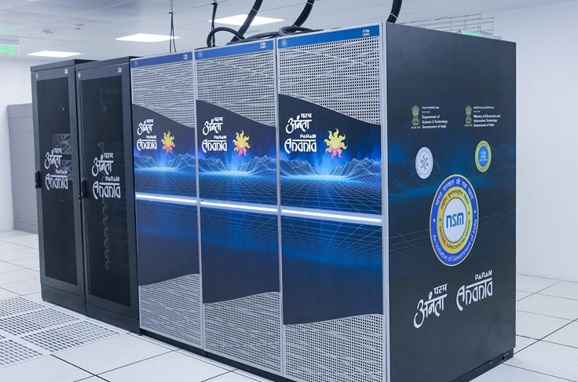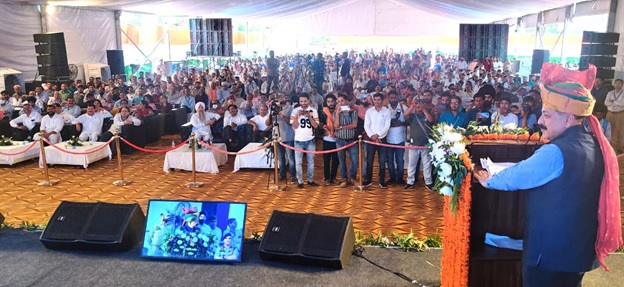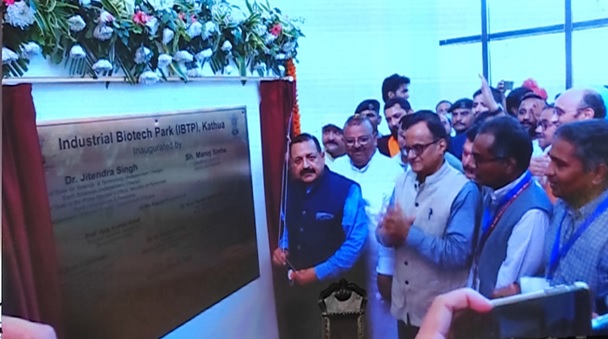
Graphical abstract
Electrical air conditioners/desert coolers/electric heaters are widely used to provide thermal comfort inside residential and commercial buildings, which consume significant energy. Researchers from the Department of Energy Engineering, Central University of Jharkhand, Ranchi, have designed a solar photovoltaic-powered Earth Air Heat Exchanger (EAHE) system to control the temperature of a typical residential building, meet the thermal comfort inside the buildings, and offer sustainability.
An EAHE utilizes temperatures below 2-3 m from the Earth’s surface that remain consistent throughout the year irrespective of ambient air temperature variations. The temperature beneath the Earth’s surface is cooler in the summer and warmer in the winter than the air above.
The system designed by the researchers uses the Photovoltaic solar system to blow ambient air through a pipe installed at a certain depth from the surface. The air will get warmer and cooler in winter and summer, due to heat exchange with the surrounding soil. The treated outlet air can be used to maintain a comfortable temperature inside buildings.
The EAHE is one of the most efficient energy-saving approaches to meet the heating/cooling requirement of residential buildings/greenhouses. By integrating solar photovoltaics, the energy requirement of EAHE’s blower and the electricity requirement of the entire structure can be met, resulting in a self-sufficient, sustainable arrangement.
Electrical air conditioners/desert coolers/electric heaters are widely used to provide thermal comfort inside residential and commercial buildings, which consume significant energy. Researchers from the Department of Energy Engineering, Central University of Jharkhand, Ranchi, have designed a solar photovoltaic-powered Earth Air Heat Exchanger (EAHE) system to control the temperature of a typical residential building, meet the thermal comfort inside the buildings, and offer sustainability.

The researchers have designed a model EAHE for a typical residential building with optimized parameters resulting in an annual energy gain of 8116.7 kWh.
“Compared to the electricity cost provided by a continuous diesel generator, the designed system exhibits simple payback years of around 5 for one day of autonomy. If 24-hour grid electricity is available, a solar PV system has a straightforward payback period of 4 to 5 years,” informs Dr Basudev Pradhan, the lead researcher.
The team found the system to be energy saving and environment friendly, with its suitable applicability in urban areas with 24-hour grid availability and rural areas where grid extension is difficult. This standalone, net zero system can be further optimized for various locations considering the atmospheric and soil parameters variation.
“Moreover, this hybrid system has the potential to provide carbon credit of US$ 336.86 kWh/year. Thus, the system is an energy-saving and environment-friendly approach for both urban and rural areas”, Dr Pradhan points out.
Besides Dr Basudev Pradhan, the team comprises Kumari Anshu and Prashant Kumar. The study has been published in the journal Renewable Energy. It has received financial support from the Department of Science and Technology and the Ministry of Human Resources and Development (MHRD).
India Science Wire
ISW/SM/CUJ/Solar/Eng/01/05/2023





